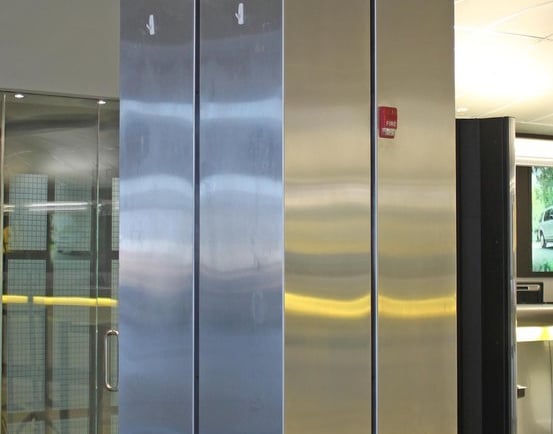How Thick Is a Column Wrap
How Thick Is a Column Wrap
Innovative Architectural Metals
4/1/20252 min read


How Thick Is a Column Wrap?
"Details create the big picture." – Sanford I. Weill.
When designing a space, columns play a crucial role in both structure and aesthetics. But what happens when the raw, unfinished look of a column needs a facelift? Enter column wraps—versatile, stylish, and practical. But one pressing question always comes up: How thick is a column wrap? Let’s dive deep into the factors that determine column wrap thickness, the materials involved, and how to make the right choice for your project.
What Is a Column Wrap?
Before we get into thickness, let’s define what a column wrap is. A column wrap is a decorative covering that encases an existing column, providing a polished, finished look. It can be used for both functional and aesthetic purposes, whether hiding structural imperfections or complementing architectural style. Column wraps come in various materials, each with its own standard thickness. But how thick is a column wrap? That depends on multiple factors, which we’ll explore next.
How Thick Is a Column Wrap?
The thickness of a column wrap varies depending on the material, application, and design preferences. In general, most column wraps range between 16ga to 1/4 inches thick. However, some custom-designed wraps can be even thicker, especially when insulation or additional reinforcements are required. Let’s examine the most common materials and their standard thicknesses.
Factors That Influence Column Wrap Thickness
1. Material Selection
Different materials come with different thickness requirements. Lightweight options like aluminum are thinner, while stainless steel is heavier for durability.
2. Installation Method
Some wraps are designed to be snap-fit, while others require adhesives or mechanical fasteners, which can impact the final thickness of the column wrap.
3. Structural Requirements
In some cases, column wraps add reinforcement to the existing column. Thicker materials may be necessary for load-bearing considerations, even if the wrap itself is primarily decorative.
4. Aesthetic Preferences
Do you want a slim, minimalist wrap or a bold, statement-making column? The visual impact you’re aiming for will influence the thickness you choose.
Choosing the Right Column Wrap Thickness
Selecting the right column wrap thickness comes down to balancing function and design. Here are a few practical steps to ensure you make the right decision:
Measure your existing column. The diameter or width of the column will determine how much additional thickness can be accommodated without overpowering the space.
Consider the surrounding architecture. A massive, thick column wrap in a small room may feel bulky, whereas a thinner wrap might lack presence in a large, open space.
Factor in installation constraints. Some wraps require space for adhesives, brackets, or other mounting hardware. Make sure you account for this in your measurements.
Think about longevity and maintenance. Thicker materials often provide better durability, but they may also be heavier and require additional support.
Final Thoughts
So, how thick is a column wrap? The answer depends on the material, purpose, and design considerations. Choosing the right thickness is essential for achieving the perfect balance of aesthetics and durability. Take the time to evaluate your space, measure precisely, and select a column wrap that enhances your architectural vision. With the right choice, your columns will go from structural necessity to stunning design elements!
Ready to find the ideal column wrap for your project? Explore your options and start transforming your space today!

High-quality architectural metal for commercial construction.
Call us today
Contact us to get started
763-670-4620
© 2019. All rights reserved.
